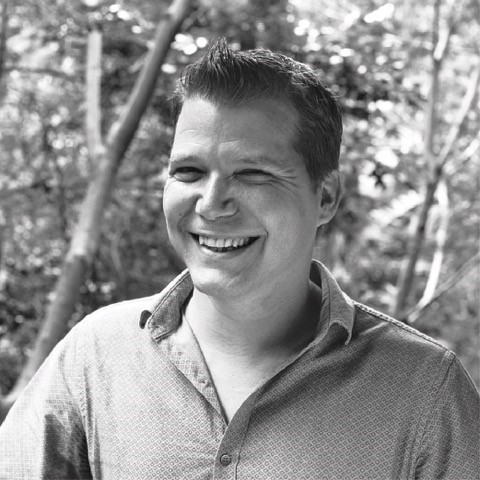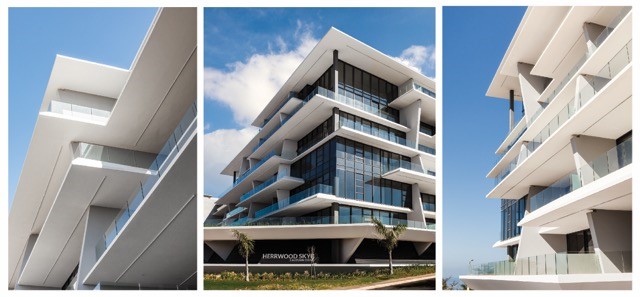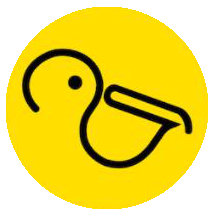Interview with Architect Greg Gordge of Elphick Proome Architects by Janine Course, Pelican Systems
Greg Gordge was born in 1978 in Durban, South Africa. He obtained a Bachelor of Architecture in 2005 at the University of Natal and soon after joined Pennington & Associates where he worked for 2 years. In 2007 Greg opened his own practice and 2 years later joined EPA. He was made an associate of the practice in 2015 and partner in 2017. Recent experience includes residential, industrial and commercial developments.

What inspired you to become an architect?
It seemed to be an innate thing. It has always been something I wanted to do. What I didn’t realise was how dynamic this career is, in that there are aspects of creating and making things and then building them and the knowledge required to do this while interfacing with people from all sorts of backgrounds and experiences. The end products have a huge impact on how people function in the world, not to mention how the unnatural environment impacts or interfaces the natural one. For me, this is a worthwhile and interesting challenge.
Which architect has most influenced your work or your work habits?
There is a vast amount of talent out there. Many have influenced my work in different ways and for different reasons. I would have to say that Herzog & de Meuron have perhaps, been a greater influence than others in their creative ability to provide interesting vernacular opportunities to projects in various climatic and cultural locales. Their work in China and Miami for example is incredibly different to their European projects. Another great influence would be Thomas Heatherwick in that he is not an architect by profession – his background is industrial design and therefore he brings a different sensibility to architectural work.
What advice would you give aspiring architects that you wish you had been told earlier?
Practice, practice, practice. It takes longer than you think. Malcolm Gladwell speaks of the 10,000 hour rule –“excellence in any endeavour requires a large amount of practice”. Further to this is the reality that Architecture is a time consuming undertaking. It will require great focus and dedication. From a design point of view, I would recommend that people look beyond architecture for inspiration. It is often easy to look at other architects and be inspired by their work. But I tend to look at what inspires them. I’ve found that, often, the good ones are inspired by other things – not architecture.
What has been your biggest challenge in Architecture or business and how have you overcome it?
Getting people excited about the possibilities architecture offers. This is difficult in the sense that buildings cost a great deal of money. Architecture potentially offers so much more than the initial brief demands. As such, as an architect, we need to be able to offer feasible value to the built environment. And by taking time to interrogate these often hidden opportunities can bring a great deal of value to a project.
What project up to date has been your favourite project to design and why?
Herwood Skye – a multi storey apartment building along Herwood Drive in Umhlanga. This project offered an opportunity to extrapolate residential unit typologies in an alternative way – not the typical up down approach. This was achieved by abstracting the natal veranda vernacular in a contemporary way. Although the internal unit layouts are similar, the undulating position of units and balconies, provides a situation where each unit becomes unique. In an abstract way this acknowledges the individuality of each of the users. This was a successful opportunity to differentiate within the market for an otherwise usually conservative product offering.

Photos by Skye Herrwood
Trends in Architecture you have noticed or that have changed architecture for you…
I consciously try not to be influenced by trends in architecture as these often result in buildings that date quickly. Post-modernism is a good example of this! Although one can’t always ignore these influences, I try to always be mindful of them.
Design challenges that come up often…
The greatest design challenge to my mind is parking. Almost all commercial buildings today are designed around the motor vehicle – often the feasibility of a project is purely based on how we can integrate this component in the most cost effective and efficient way. The issue arises in that our ground level urban interfaces are often parking garages due to costs of excavation and the limitation of vertical vehicular movement. Our building forms are also often influenced by this parking grid. The challenge here is how we mitigate this constraint and provide a people oriented urban condition while still achieving feasible efficiency.
How are you incorporating sustainability into your architectural designs or Top 3 Green or Sustainability strategies for design?
These days sustainability is a catch phrase and the green star its staple. This is no doubt a great strategy. But sustainability extends far beyond the energy efficiency of buildings. It begins with urbanism and place. To my mind it is about creating environments that are incredibly useful over extended times. By this I mean that if we add additional value to a building or alternative use over time then we can create protracted usability throughout the day. A good example of an unsustainable methodology is the ‘office park’ phenomenon – office buildings within these environments are utilised for limited amount of time through a 24hour cycle. The rest of the time they stand unused while consuming energy and space. To my mind this is intrinsically unsustainable. This is where mixed use buildings within dense urban environments excel. This is about the baseline thinking prior to implementing green star strategies.
Elphick Proome Architects Incorporated







